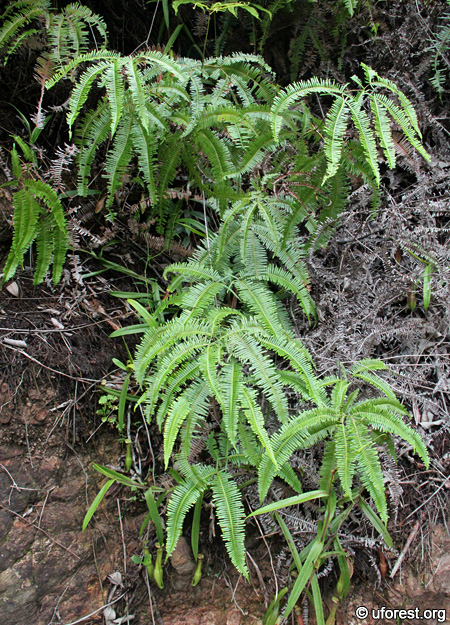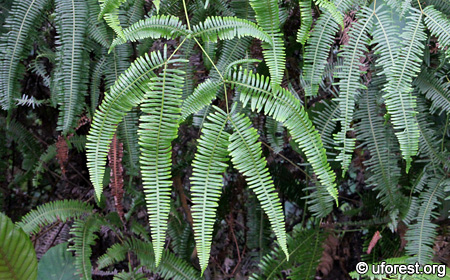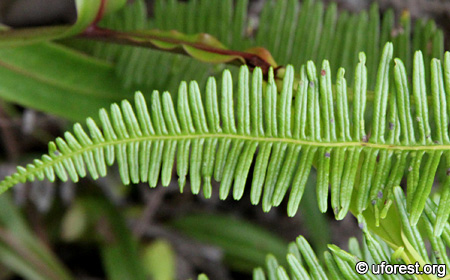Dicranopteris linearis (Burm. f.) Underw.
| Etymology | Genus | From Greek, two-branched (dikranos) fern (pteris); referring to the branching foliage |
|---|---|---|
| Species | Linear; likely in reference to the leaflet lobes | |
| Family | Gleicheniaceae | |
| Synonyms | Dicranopteris dichotoma (Thunb.) Bernh., Gleichenia linearis (Burm. f.) C.B. Clarke | |
| Common Names | Resam Fern, Bengkawang | |
| Status | Native: Common | |
| Form | Creeper | |
| Native Distribution | Tropical Africa, Tropical Asia | |
Diagnostics:
Dicranopteris linearis is commonly seen growing in dense thickets along forest edges and trails under direct sunlight. It can be identified from the branching which forms a pair of leaflet at each time. The leaflet have pinnate & linear-shaped lobes that gradually tapers to the tip.
There is a very similar congener called Dicranopteris curranii, which has longer and wider fronds. The defining feature is that the first branches of secondary veins arise near to mid vein (coaste), whereas D. linearis rise away from the coaste. While common, D. curranii has been only recorded in the Central Catchment Nature Reserve, compared to the widespr
Interesting Facts:
The crushed leaves are applied as a poultice to control fever in Malaysia (NParks, 2013).
A thicket of Resam Fern.

Branching form of the frond.

Close up of the leaflet lobes.

Spores.

Young shoots (fiddleheads).
References
FloraFaunaWeb. (2013) Dicranopteris linearis (Burm. f.) Underw. National Parks Board, Singapore. https://florafaunaweb.nparks.gov.sg. Accessed on 21-Nov-2017.Author: Siyang
Posted: 2017-11-21 / Modified: 2017-12-25